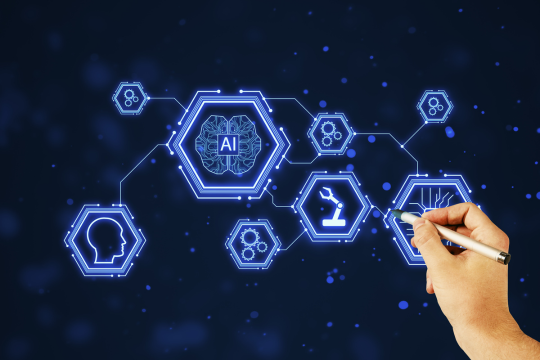How to Build Generative AI Solutions: Guide for 2025
In recent years, Generative AI Solutionshave transformed from futuristic concepts to real-world tools that power everything from content creation and chatbots to code generation and synthetic media. As businesses, developers, and entrepreneurs seek to harness the capabilities of AI for innovation and automation, understanding how to build generative AI solutionshas become essential.
This blog dives deep into the fundamentals, tools, technologies, frameworks, and best practices to help you build effective, scalable, and ethical generative AI applications.
Table of contents [Show]
- 1 What is Generative AI?
- 2 Step-by-Step: How to Build Generative AI Solutions
- 2. 1 1: Define the Problem Clearly
- 2. 2 2: Choose the Right Type of Generative Model
- 2. 3 4: Choose the Right Frameworks and Tools
- 2. 4 Step 5: Train or Fine-Tune Your Model
- 2. 5 Step 6: Evaluate Model Performance
- 2. 6 7: Deploy Your Generative AI Solution
- 2. 7 8: Add a Feedback Loop
- 2. 8 9: Ensure Ethical AI Practices
- 2. 9 Real-World Examples of Generative AI Solutions
- 2. 10 Challenges in Building Generative AI
- 2. 11 Conclusion: The Future of Generative AI is Now
What is Generative AI?
Generative AI refers to a class of artificial intelligence algorithms that can generate new content — text, images, music, video, code, and more — based on existing data. It uses models like Generative Adversarial Networks (GANs), Variational Autoencoders (VAEs), and transformer-based models such as GPT, DALL·E, and Stable Diffusion.
Unlike traditional AI systems that follow predefined rules or predict outcomes, generative AI can create new content that closely mimics human-like creativity.

Why Build Generative AI Solutions?
Before diving into the technicalities, it’s important to ask why generative AI matters:
- Automate content generation for marketing, blogging, product descriptions, and more.
- Enhance customer experience via personalized responses in chatbots.
- Boost productivity with code and design generation tools.
- Create synthetic data to train other AI models more effectively.
- Generate art, music, and creative assets without human input.
Whether you're building a startup, creating tools for internal automation, or entering the AI product market, generative AI solutionsoffer high-impact potential.
Step-by-Step: How to Build Generative AI Solutions
Let’s explore the essential steps to build a functional, scalable generative AI application.
1: Define the Problem Clearly
Every great solution starts with a well-defined problem. Are you trying to generate realistic human faces? Or automate resume writing for job applicants? Or maybe build a customer support chatbot?
Ask yourself:
- What is the input data?
- What is the expected output?
- Who are the end users?
- What real-world need does this solve?
Clearly defining your use case helps you select the right data, model type, and tools.
2: Choose the Right Type of Generative Model
Different tasks require different generative models:
| Use Case | Recommended Model |
|---|---|
| Text Generation | GPT-4, LLaMA, PaLM |
| Image Generation | DALL·E, Stable Diffusion, MidJourney |
| Audio/Music | Jukebox, MusicLM |
| Video | Runway Gen-2, Pika Labs |
| Code Generation | Codex, Code LLaMA |
If your solution requires text + image (like generating images from text prompts), consider multimodal models like GPT-4 with Vision or Gemini.
3: Collect and Prepare Data
No AI system works without high-quality data. For generative AI:
- Use large, diverse, and relevant datasets.
- Clean and label your data carefully.
- For sensitive use cases, ensure data privacy and compliance (GDPR, HIPAA, etc.).
If you're building a text-based generative AI tool, open datasets like Common Crawl, Wikipedia dumps, and domain-specific corpora can be used. For images, datasets like ImageNet, COCO, or custom scraping may help.
Tip: More isn’t always better — curated, high-quality datasets often outperform massive but noisy ones.
4: Choose the Right Frameworks and Tools
The modern AI ecosystem offers a variety of frameworks that simplify model training, fine-tuning, and deployment.
Popular AI Frameworks:
- TensorFlow (Good for production-ready solutions)
- PyTorch (Preferred for research and experimentation)
- Hugging Face Transformers (For text generation and pre-trained models)
- Diffusers by Hugging Face (For image/video generation)
You can also use AutoML tools or OpenAI’s API if you don’t want to build from scratch.
Step 5: Train or Fine-Tune Your Model
Depending on your goal and resources, you can:
- Train a model from scratch (expensive, time-consuming, and data-intensive)
- Fine-tune a pre-trained model (more efficient, widely adopted)
Fine-tuning lets you customize a general-purpose model (like GPT-3.5 or LLaMA-2) for your specific domain — legal, healthcare, education, etc.
Techniques like prompt engineering and low-rank adaptation (LoRA) can also help you achieve high performance with minimal cost.
Step 6: Evaluate Model Performance
Use both automated metrics and human evaluation:
- For text: BLEU, ROUGE, Perplexity
- For images: FID, IS
- Human feedback: relevance, creativity, accuracy
Testing your model on real user data helps identify blind spots and improve performance iteratively.
7: Deploy Your Generative AI Solution
Deployment involves making your model accessible to users. Depending on your scale:
- Use REST APIs or GraphQL for web integration.
- Use cloud providers (AWS, GCP, Azure) for scalable deployment.
- Use OpenAI, Cohere, or Anthropic APIs for plug-and-play capabilities.
- Implement security measures like rate limiting, moderation, and privacy protection.
Tip: Optimize your model with quantization or pruning for faster inference and lower costs.
8: Add a Feedback Loop
Generative models improve over time when fed with real-world user feedback. Let users:
- Rate outputs
- Flag inaccuracies
- Request re-generation
This data becomes valuable for continuous learning, refinement, and user satisfaction.
9: Ensure Ethical AI Practices
Building ethical generative AI solutionsis crucial. Make sure to:
- Avoid biased training data.
- Include content moderation.
- Be transparent about AI-generated content.
- Respect copyright and intellectual property.
- Provide disclaimers for synthetic media.
Regulations around generative AI are evolving fast — stay updated with local and international laws.

Real-World Examples of Generative AI Solutions
To spark some inspiration, here are a few examples of generative AI in action:
- ChatGPT – Text-based assistant for general-purpose dialogue.
- Copy.ai – Marketing copy generator for businesses.
- Runway ML – AI tools for video editing and generation.
- GitHub Copilot – Code generation assistant integrated into IDEs.
- Lumen5 – Converts blog posts into AI-generated videos.
Whether in SaaS, gaming, e-commerce, healthcare, or finance, generative AI is becoming a core capability.
Challenges in Building Generative AI
While exciting, building generative AI solutionsalso brings challenges:
- High computational costs
- Data privacy risks
- Difficulty in evaluating creative outputs
- Misinformation and misuse
- Regulatory uncertainty
Plan your architecture and use case to address these challenges proactively.
Conclusion: The Future of Generative AI is Now
In 2025 and beyond, Generative AI Solutionswill continue to unlock unprecedented opportunities in creativity, personalization, automation, and innovation. Whether you're an individual developer, a startup founder, or part of a large enterprise, understanding how to build and deploy these solutions can set you apart in a rapidly evolving digital landscape.
Remember:
- Start with a strong use case.
- Use the right tools and data.
- Focus on ethical and scalable development.
- Iterate based on real user feedback.
If you’re ready to shape the future of AI-driven content, now’s the perfect time to start building your own Generative AI Solution.
